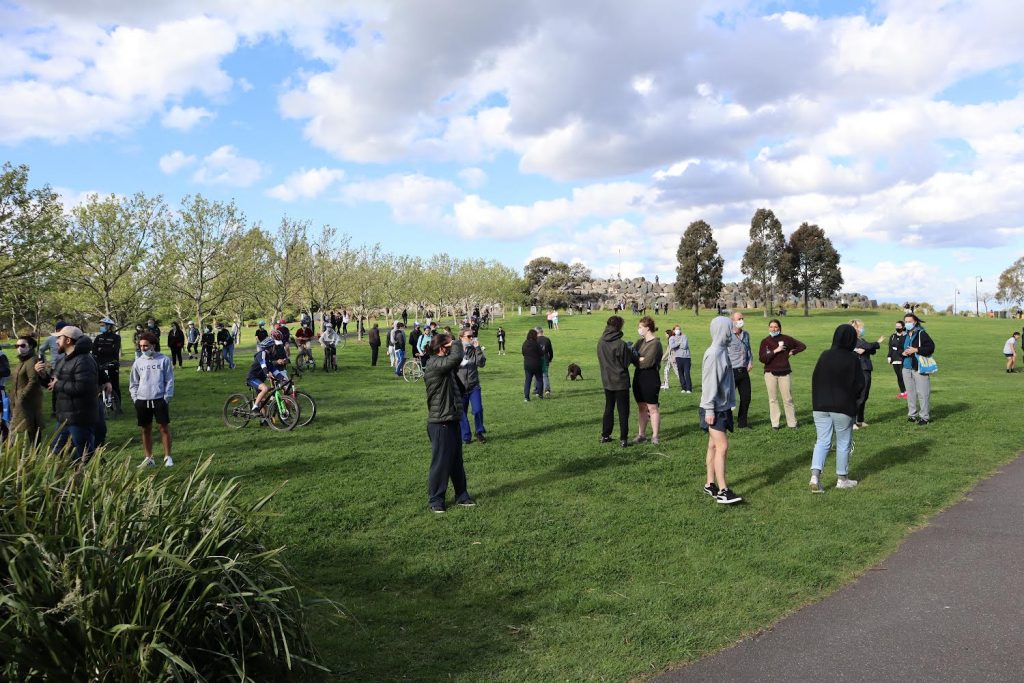The Victorian government led by Daniel Andrews has apparently introduced a bill for new Pandemic Legislation into Parliament today (26 October 2021).
You wouldn’t know it by looking at the Victorian Parliament website. I can’t find the Bill. Only a title page.
Where is the bill?
The press have had a bit of commentary today. They all seem to assume that the Bill has become legislation. Nobody is complaining much. It looks as though the press had advance copies. Did they get a chance to read them?
I had a look at the Parliament website. I couldn’t find a link to access the Bill.
By the time people read this blog post, the link will probably be there. But it’s not there now. Hmm, that doesn’t help the community to know what is going on and engage in debate.
But the community might not be too worried right now, given that Premier Andrews has given us “freedom” (of sorts), and the lockdown is over (kind of). Good timing.
Someone gave me a draft of the Bill
Seeing as I can’t find the Bill on the Parliamentary website, I have had to look at a draft somebody gave me. I presume it is a correct version. It looks quite official.
But really, it’s astounding that something as far reaching as this is not a matter of public record – yet.
Especially as the journalists seem to think this Bill is going to be passed on Friday. That’s in 3 days time. Sorry? How do they know that? And… Why the rush?
People of Victoria, through the sudden introduction of new Pandemic Legislation, the current government does not want you to assess what is about to happen to you, and does not want to give you time to think about it.
Below is the apparent name of the bill. It’s been in the wings for many months. The document I am looking at says it’s the twelfth draft. But the government thinks it’s not worth telling us (the community in Victoria) about it sooner than this.
Why aren’t today’s press reports complaining about this draconian legislation more loudly?

Public Health and Wellbeing Amendment (Pandemic Management) Bill 2021
Here are a few disturbing provisions in the Bill.
Definition of serious risk to public health is too broad
There’s a definition of “serious risk to public health” in s 3(4). The new definition inserts:
“a pandemic disease or a disease of pandemic potential may pose a material risk of substantial injury or prejudice to the health of human beings, even when—
(a) the rate of community transmission of the disease in Victoria is low; or
(b) there have been no cases of the disease in Victoria for a period of time.
Okay, that means that the legislation will say that something may post a “material risk of substantial injury” even when cases are spreading at a low rate, or where there have been no cases “for a period of time”.
What period of time? I don’t know. But this means that the government can pretend something is a material risk even when there are no cases. Say there’s a disease which doesn’t ‘exist’ anymore. Say there haven’t been any cases for decades. This provision says that the disease may still pose a material risk – if someone in power wants to say so.
Premier’s powers are too great
In s 165A(2), the Bill says that the Parliament “intends” that any limitations on human rights protected in the Charter of Human Rights and Responsibilities Act should be demonstrably justified… But what does this mean? It sounds nonsensical. It sounds like “we are about to limit human rights and we intend to justify it”.
Which is a bit self-serving, if the limitations are not, objectively speaking justified.
Like the definition of “serious risk to public health”, which is proposed to cover situations where there is no risk in fact, but someone in power might think or say that there may be.
Section 65AB(1) states:
The Premier may make a declaration under this subsection (a pandemic declaration) if the Premier is satisfied that there is a serious risk to public health arising from—(a) a pandemic disease; or(b) a disease of pandemic potential.
This is a massive shift. Now the Premier, with no health or medical or public health background, can decide on whether there is a serious risk to public health, and make a pandemic declaration. What if he or she has no idea about how to assess whether there’s a serious risk to public health? Sure, they may get advice. But they can also ignore good advice if they want to do so.
Oh, I forgot, he or she doesn’t have to be qualified to make such an assessment. They can just say there’s a risk even when there’s no cases. So they can hypothesise, based on what – cases in Northern Europe? or an island off Northern Canada? or no cases anywhere at all? – that there’s a risk here in Victoria.
Reporting to Parliament on reasons is not enough
Section 165AG states that the Premier must report to Parliament on his or her reasons for the Pandemic Declaration. That’s not enough. That doesn’t create enough transparency or accountability – the Premier could say very little. He or she could make a series of assertions. It’s up to him or her what detail they include.
And anyway, here, as for several previous sections, it says that failure to comply with the Act does not lead to invalidity.
That means the Act says ‘do something like this’ at the same time as saying ‘if you don’t do it like that, it doesn’t matter, what you do will still be valid’.
Groups of people may be targeted
Section 165AK states that a pandemic order might apply to specific groups of people. I have heard some complaints that this will enable targeting on a discriminatory basis that might otherwise be unlawful. It certainly looks like this will be condoned.
But a warning bell in this part should be sounding for all of us (journalists, are you listening?). It says a pandemic order may be focussed on people based on:
(b) their participation in or presence at an event;
(c) an activity that they have undertaken or are undertaking;
(d) their characteristics, attributes or circumstances.
Remember when they (apparently the Civil Aviation Safety Authority via a request of Victoria Police) tried to ban filming at the protests? The media appealed this decision successfully. But be warned, if journalists try to cover an event, they could soon be ordered not to do so.
Not to mention the orders which can be made over the many who have sought and are still seeking to protest against various Directions such as mandatory vaccination directions issued in recent weeks. They are presumably going to be ordered not to do so.
Doesn’t that have something to do with free speech? Isn’t that something we should all be worried about?
Pandemic Orders are scarily wide
In s 165AM there seem to be very little limitations on what a pandemic oder can do. It’s much, much wider that the current directions that can be made under a State of Emergency (s 200 of the Act). I have already stated that I think some of the recent directions are unlawful because they go beyond the terms of the legislation.
But now, what is proposed has much broader terms.
The control the Premier (and Minister) may wield over the populace – in a very broad range of activities – is quite unprecedented. A system of permits for just about anything is proposed.
“In respect of an activity, a business, an undertaking, a gathering, or movement within or entry into an area.”
It might seem, after so many months of lockdown, that this is just more of the same. But it isn’t.
And the lawfulness of the directions given to date has not fully been tested. That doesn’t mean they have been lawful.
It certainly looks as though this new legislation is doing its best to make sure wide, draconian restrictions which might not be lawful now, soon will be.
Is there scrutiny?
No, there’s no scrutiny. (See s 165AS and 165AT)
Just because you use the word scrutiny, doesn’t mean there is true scrutiny.
There are quite a few convoluted provisions regarding the involvement of a “Scrutiny of Acts and Regulations Committee”. Here are some takeaways.
- The Committee can report to Parliament after the pandemic order is made if they think it’s unlawful (ie too late);
- They can recommend it be suspended (how long would this take?);
- They can send a report to the Minister, Governor in Council, etc recommending suspension and 7 days later it will be suspended (still too little too late, but what happens next?);
- The Minister can tell the Governor in Council to cancel the suspension and he/she can then cancel the suspension (oh dear, back to the beginning);
I’m only up to page 36. The Bill goes to page 118. I shudder to think what else is in there.
Don’t pass this Bill. It is a bad idea. It gives the Premier and others unprecedented power with little if any accountability. I hope those expected to vote for it do not do so.





